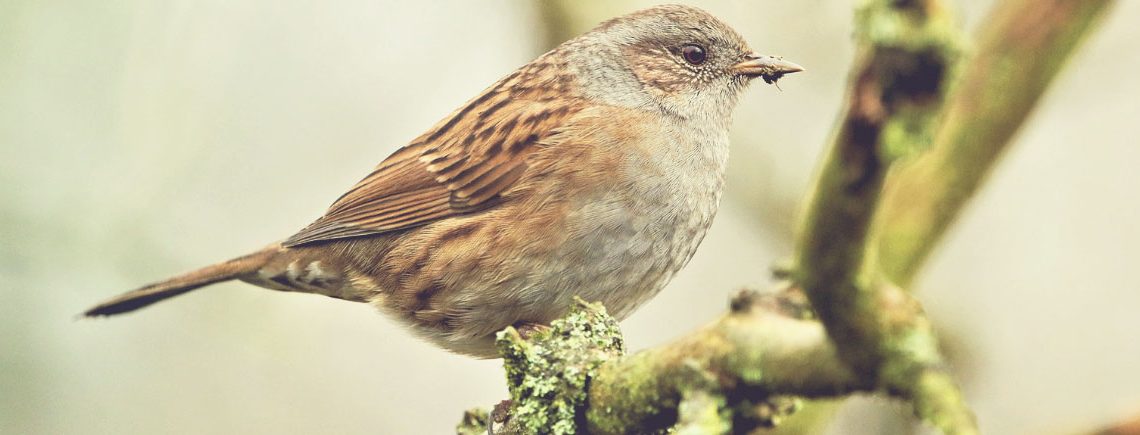The Dunnock: A Guide to Ireland’s Garden Birds
The Dunnock is a small brown bird that is often seen in many Irish gardens. Known as a ‘Dunnóg’ in Irish, this shy, little bird is widespread throughout Ireland, with a population of approximately one million and a lifelong travel radius of 1 km. It doesn’t like to venture out in the open too often which is why it is still unknown to many. Often mistaken for a sparrow, upon further examination, it is very much a different creature.
In this blog post, we’ll guide you through how to spot a dunnock in your garden, what to feed it, and the best way to care for it.
What Does a Dunnock Look Like?
About the same size as a robin, the Dunnock is dark brown with bold black streaking and a bluish-grey head and neck. Its bill is thin and pointed and its legs are an orange-ish brown colour. The name dunnock comes from the old English “dun” or “dunn” and it’s a colour that is a mix of brown and grey.
Adult dunnocks are from 13-14½ cm long. Males and females are similar, but females tend to have slightly duller plumage during breeding season. The juvenile resembles the adults, but have a more brown tone with bolder streaks of black or dark brown on the plumage that reaching the head and breast. They are sometimes confused with young robins.

What Do Dunnocks Like To Eat?
Dunnocks dine on small insects but will be attracted to your bird tables by seeds and fatty offerings such as suet treats and fat balls. In the winter months they will feed largely on seeds as invertebrate and insects like ants and spiders are more difficult to come by, and for this reason it is easy to entice the species to your garden feeding area. They will also gladly take any food scraps left out for them.
How To Feed Dunnocks
As Dunnocks are relatively shy and prefer to stay in covered areas, consider placing your bird feeders and trays under tall trees and bushes that are gently camouflaged. They are ground-feeders, so leave some food out on the ground or on a ground feeder tray for them to pick at.
Where Do Dunnocks Nest?
The nest of the Dunnock is usually well hidden in bushes or undergrowth in a wide range of locations such as gardens, hedgerows and bushes. Both the male and female build the nest using a deep cup of plant twigs, stems, grasses and other plant material, sometimes lined with moss and hair. Often, the old nests of other birds are used and adapted by the dunnock. The female incubates the eggs, but both parents assist in feeding the young. Two to three broods are the norm, with the clutch size being 4-5 blue, unspotted eggs.
Dunnocks display unusual breeding behaviour as male birds may have two females. Other scenarios also occur where two males and two females may combine into one breeding pair.
What Do Dunnocks Sound Like?
The Dunnocks’ song is described as a rather high pitched and rapid burst of somewhat tuneless notes. The metallic grating quality has been compared to a noisy wheel. Call a harsh, raspy “tcheh”.

